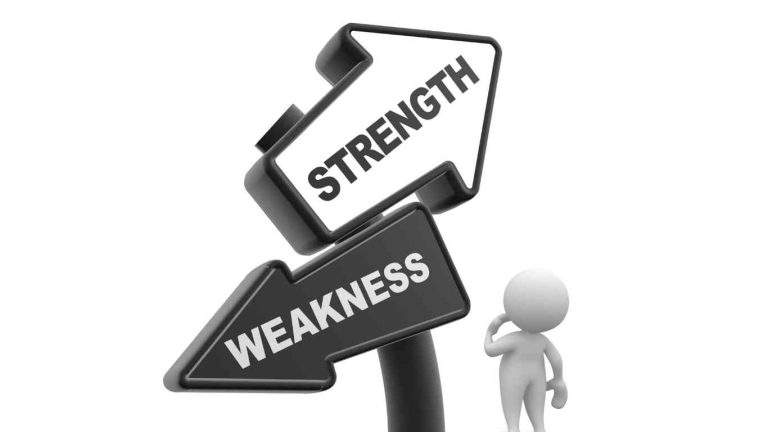Steps to consider your strengths, weaknesses, opportunities, and threats.
As a business owner, it’s essential to clearly understand your strengths and weaknesses, opportunities, and threats (SWOT) to make informed decisions and maximize your chances of success. A SWOT analysis is a valuable tool that can help you gain insights into your business and the broader marketplace. By systematically evaluating your internal and external factors, you’ll be better equipped to identify areas where you can improve, take advantage of opportunities as they arise, and mitigate the threats. In this article, we’ll explore the steps you can take to conduct a SWOT analysis for your business and start charting a path to success.
Explanation of what SWOT analysis is and why it’s essential for businesses
SWOT analysis is a widely used tool in the strategic planning process of businesses. SWOT stands for Strengths, Weaknesses, Opportunities, and Threats. It helps companies to analyze their internal and external environment and make informed decisions about their business strategies. Businesses use SWOT to brainstorm their strengths and weaknesses to identify areas to improve or enhance. Similarly, it helps to identify the opportunities in the market that the business can capitalize on and the potential threats it may encounter. This analysis is essential for companies as it enables them to minimize risks and maximize their chances of success. Understanding the SWOT of a business can lead to better planning and implementation of marketing strategies, which can generate growth and increase profitability. Therefore, SWOT analysis is essential for companies to stay competitive in today’s dynamic business environment and be better placed to take advantage of opportunities and navigate external forces.
How to identify strengths in your own business
Strengths refer to the unique skills, resources, and capabilities businesses can use to their advantage. They set a company apart from its competitors and help it succeed in its industry. Examples of potential strengths for businesses include a strong brand reputation, expert employees, advanced technology or production processes, a loyal customer base, and effective marketing strategies. To identify strengths in your business, it’s essential to take an objective look at what your company does well, what sets it apart from competitors, and what resources it has available to achieve its goals. Recognizing and effectively utilizing strengths can help businesses thrive and achieve long-term success.

Join the NoLimits Business Community
Are you a business owner looking to take your business to the next level? Join our innovative community of like-minded professionals and connect with other business owners, share insights and ideas, and build valuable relationships that will help your business thrive. Don’t miss out on this amazing opportunity to supercharge your business and join us today!
How to identify weaknesses in your own business
Weaknesses refer to areas in a business that are not performing optimally, putting the organization at a disadvantage compared to competitors. They can stem from various aspects of the business, such as poor leadership, lack of capital, unskilled workforce, or inefficient processes. Examples of potential weaknesses in a business could be a lack of innovation, poor customer service, or an outdated e-commerce platform. It is essential, to be honest about your weaknesses in your business. This analysis can help you create a list of potential areas that require improvement. Identifying weaknesses early on can prevent potentially disastrous outcomes and ensure long-term sustainability.

How to identify opportunities in your own business
Opportunities refer to favorable circumstances businesses can utilize to improve their output and growth. These can arise from various sources, such as evolving market trends or disruptive technological innovations. Some examples of potential opportunities for businesses include expanding into untapped markets, increasing online presence, developing new products and services, or entering into strategic partnerships. To identify opportunities in your business, you can start by regularly analyzing customer feedback and market trends, staying up-to-date with technological advancements, and networking with other professionals in your industry. Ultimately, taking advantage of the opportunities can help businesses stay ahead of their competitors and achieve long-term success.
How to identify threats in your own business
Threats are potential events or challenges that could negatively impact a business’s operations, profitability, or reputation. They arise from various sources, such as the economic environment, competitors, regulatory changes, or natural disasters. For businesses, some common threats include cyber-attacks, data breaches, employee misconduct, supply chain disruptions, and changes in consumer preferences. Identifying threats in your business involves understanding and assessing the internal and external factors that can influence your company’s success. This includes conducting a SWOT analysis, reviewing market trends, and staying informed about emerging risks. By identifying potential threats, businesses can develop proactive strategies to minimise risk and mitigate the impact of any adverse events that may occur.
Putting it all together
How to use the results of your SWOT analysis to improve your business

After conducting a SWOT analysis, it is essential to use the results to improve your business. Prioritising and addressing identified issues is vital for the success of any business. The first step is to list all the problems that need attention and then rank them in order of importance. It is essential to think critically about each issue’s impact on the business and to focus on the most urgent ones. Once you have a prioritized list, start addressing each issue systematically. For example, if your analysis identifies a weakness in customer service, you can create a plan to train employees and implement new procedures to improve customer satisfaction. It’s important to set measurable goals and timelines so that progress can be tracked. Regular assessment of the business’s strengths, weaknesses, opportunities, and threats will help you stay ahead. Regularly assessing and updating your SWOT analysis is essential to keep up with industry and business changes. By utilizing the information gained from a SWOT analysis, you can make informed decisions and take action to help your business thrive.
Read more: How do you identify and prioritise opportunities in your business?
By Natalie Simms
Join the NoLimits Business Community
Are you a business owner looking to take your business to the next level? Join our innovative community of like-minded professionals and gain access to a wealth of valuable resources, including a community portal to chat with other business owners, ebooks, business development software, and growth events that will transform the way you do business. Best of all, these resources are completely free and will be available to you forever.
But the benefits of joining our NoLimits business community don’t stop there. By becoming part of our community, you’ll have the opportunity to connect with other business owners, share insights and ideas, and build valuable relationships that will help your business thrive. Don’t miss out on this amazing opportunity to supercharge your business and join us today!

